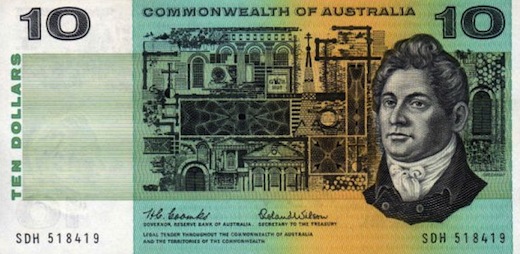Tue 15 Mar 2011
Escaping the noose…
Posted by scottc under Domes
No Comments
Francis Greenway (1777-1837), born into a family of Bristol builders and stonemasons, had a lucky break, being drawn into the sphere of architect, John Nash (1752-1835) during Nash’s years of ‘exile’ in Carmarthen, Wales during the 1790s. Nash was later to be architect to the Prince Regent and recast London as a modern classical city. Greenway designed and built a market house at Carmarthen, Wales in 1801, a commission he may have secured through Nash.
In 1809 the Greenway building firm went bankrupt. Francis Greenway forged a clause to their most recent contract, a highly irrational act as the funds would have gone to their creditors. Sentenced to death for forgery, Greenway’s neck was saved by having his sentence commuted to transportation to Botany Bay. Through this reversal of fortune, New South Wales gained its most accomplished early 19th century buildings.
Image: Sydney Market House (1820, later Police Office, demolished c1890 for the Queen Victoria Building) private collection
Greenway arrived in Sydney in 1814, having met Surgeon John Harris on board ship. He soon after designed a domed stairhall for Harris’s Ultimo House. Greenway presented his credentials to Governor Macquarie, which included his design for the Carmarthen market house. This may have provided the model for his Sydney Market House, which featured a dome at the crossing of two wings.
In 1966 the forger, Francis Greenway, was commemorated on the Australian $10 note.

Image: Francis Greenway, as commemorated on the Australian $10 note, designed by Gordon Andrews, 1966
